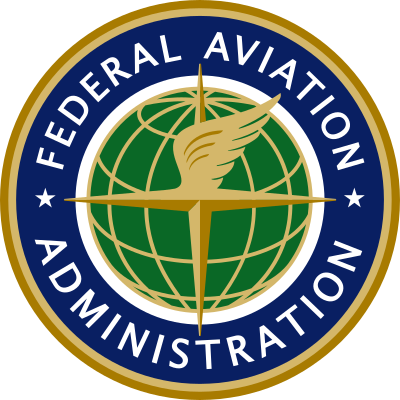Global Avionics Round-Up from Aircraft Value News (AVN)

FAA logo
In the whirlwind of headlines about NextGen surveillance, 5G interference, and ADS-B, one U.S. Federal Aviation Administration (FAA) requirement has been creeping under the radar, yet it could reshape safety, retrofit schedules, and costs across the aviation industry: the recently legislated mandate for 25-hour Cockpit Voice Recorders (CVRs).
As of May 2025, the FAA mandate requires that newly manufactured U.S.-registered aircraft be equipped with CVRs that can record for at least 25 hours, a significant upgrade from the old standard of two hours.
For existing aircraft, the regulation demands retrofitting: all aircraft subject to the rule must be updated with 25-hour CVRs by 2030.
These changes stem from the FAA Reauthorization Act of 2024, adopted at the recommendation of the NTSB, aligning U.S. rules more closely with ICAO and EASA standards.
Many aircraft operators, especially in general aviation, small commuter, and business aviation, may not yet be aware of just how broad, costly, and safety-critical this mandate is. Here are the major reasons why it deserves more attention:
· Better Data for Investigations and Safety Improvement
Longer CVR recordings mean more context. Accidents or incidents often evolve over dozens of minutes, particularly those involving stalled approaches, system failures, or human factors like fatigue or distraction.
With only two hours of recording capacity, critical earlier events may have been lost. A 25-hour record gives investigators and safety analysts access to much more of what was happening before something went wrong. That leads to more robust safety recommendations.
· Heavy Cost and Retrofitting Burden
While large airlines might have already been planning for such changes, many operators of smaller, older aircraft will now face nontrivial cost burdens. Retrofitting CVRs is not just plugging in a new unit; installation often involves fitting wiring, structural mounts, possibly modifying panels, ensuring power supply backups, integrating into other avionics systems, and getting certification or supplemental type certificates (STCs).
These all add up—both in money and aircraft downtime. Because it’s a regulatory requirement, it can’t be deferred without potential operational penalties.
· Manufacturers, Maintenance, and Supply Chains Will Be Stretched
Parts, qualified CVR units with sufficient capacity and reliability, STCs, test facilities, and certified installers are all required. As with other large mandates (e.g. ADS-B Out, altimeter filtering for 5G), existing supply chains may be stretched. Demand will escalate as the 2030 retrofit deadline approaches, and some operators might face delays in getting airplanes back from the shop.
· Regulatory and Operational Impacts
Beyond cost, there are operational risks. Failure to comply could affect aircraft insurance, oversight, eligibility for certain types of operations (FAA or international), or even cause grounding in low-visibility operations or situations where data recording is essential.
There’s also an alignment issue: operators flying across international borders may need to meet both U.S. and foreign requirements, so harmonization helps. However, in cases where the U.S. is late to adopt, other jurisdictions may already impose similar or stricter CVR mandates.
What’s the Timeline and Who’s Affected
- New aircraft built after May 16, 2025: Must have 25-hour CVRs installed from the factory.
- Existing aircraft: Subject to retrofit by 2030.
- Scope: Generally applies to U.S.-registered aircraft subject to requirements that already demand CVRs. The regulation is less likely to affect ultralights or some experimental aircraft unless they fall under the CVR requirements.
Challenges and Considerations for Stakeholders
Here are several factors that operators, maintenance providers, fleet managers, and regulators should consider:
Scheduling shop time ahead of the deadline will be vital. Some shops may get backlogged as 2030 draws near.
It’s not just about capacity. The device must meet technical performance standards, environmental qualifications (vibration, temperature), reliability, backup power, and data integrity. For some smaller operators, budgeting for both parts and labor will require careful financial planning. Incentives, grants, or shared retrofit programs will prove useful.
Structural, electrical, and avionics system limitations might complicate fitting new CVRs in legacy aircraft, another reason to start early. Ensuring proper documentation, certification, inspections, and demonstrating compliance under FAA rules will be essential.
Why It Has Stayed Under the Radar
A few reasons this mandate hasn’t grabbed as much attention:
For starters, the mandate doesn’t affect all airspace operations; only those that already required CVRs. Many smaller aircraft that don’t fly certain kinds of commercial or IFR operations might assume it doesn’t apply to them and thus aren’t watching.
Compared with ADS-B, NextGen, or 5G altimeter interference, this mandate isn’t flashy or high-profile. Upgrading something “behind the panel” doesn’t make for good headlines, even though it’s foundational for safety.
The long-retrofit timeline (through 2030) makes it feel distant for many operators, reducing urgency in the short term.
Also, because the requirement is embedded in the FAA Reauthorization Act rather than in an immediately enforced rule change, many haven’t realized that the compliance clock is already ticking.
The 25-hour CVR mandate might not be as visible as ADS-B or 5G concerns, but it’s arguably one of the most fundamentally important avionics upgrades on the near-term horizon. It forces an upgrade of the “memory” of the cockpit: what pilots, investigators, and safety systems can know when things go wrong.
This article originally appeared in Aircraft Value News.
John Persinos is the editor-in-chief of Aircraft Value News.